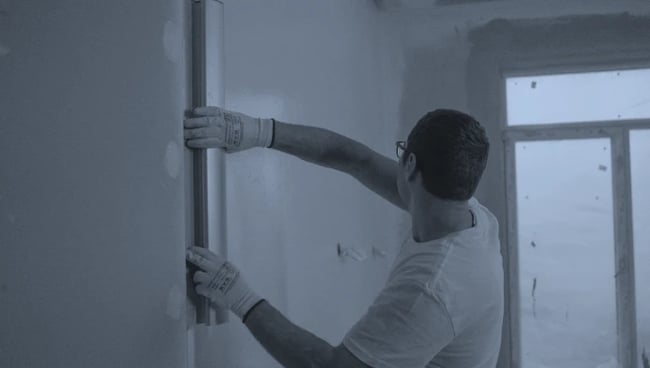The 360 Series
Our optimisation advice
In the Swiss tax system's complex maze, those lacking accurate information risk ending up with a hefty tax bill. Discover our 12 tips for optimising your tax burden to avoid this situation.




Tip 1: Invest in continuing training
Up to a certain amount, continuing education costs are deductible at both federal and cantonal levels. These must be effective, professionally oriented continuing education costs. According to art. 33 para. 1 lit. J of the LIFD, these costs are deductible up to a maximum of CHF 12,000.00, provided that the taxpayer holds a diploma of secondary level II or has reached the age of 20 and is training for a diploma other than a first diploma of secondary level II. Most Swiss cantons apply the same provisions.
Tip 2: Deduct travel expenses
The costs that an employee incurs during their commute to and from work are business expenses deductible from income, provided that they are allowed by the employee. At a federal level, the maximum deductible is CHF 3,000.00. There are differences in treatment between cantons. We recommend that you refer to the general instructions of your canton of residence to determine the amount you can deduct as travel expenses.
Tip 3: Plan your renovation projects
While capital works are only deductible from property gains tax, renovation expenditure is deductible from taxable income. You have the choice, each year, between a flat-rate deduction (10% of the rental value if the period of ownership is less than or equal to 10 years / 20% of the rental value if the period of ownership is greater than 10 years) or the deduction of actual costs if these exceed the flat-rate deduction. Generally speaking, the invoice date is decisive, but some cantons take into account the date on which the work was carried out.
Under the Federal Ordinance on Costs relating to Buildings, measures that help to save energy or use renewable energy (replacement of insulation in the building envelope, replacement of windows, installation of a heat pump, etc.) can be deducted from direct federal tax. However, only investments borne by the owners themselves and not covered by public subsidies are deductible.
In addition, the costs of dismantling a building that has not been refurbished may be deducted from federal tax if a new, more energy-efficient building is built and this new building fulfils the same purpose as the building that was demolished. The following are considered deductible dismantling costs: dismantling, demolition, removal, and disposal costs.
Since 2020, these costs can be spread over three tax periods. The cantonal regulations are based on the federal decree but are not identical in all cantons.

Tip 4: Contribute to a 3a restricted pension plan
If you have an income that is subject to AVS, you can make annual contributions to the 3a restricted pension plan. The maximum contribution for taxpayers who contribute to a pension fund is CHF 7,056.00 (2024), while self-employed people or employees who do not contribute to the LPP can deduct up to 20% of their income, but no more than CHF 35,280.00. We recommend you read our article on the options for buying into Pillar 3a.
Tip 5: Make pension fund purchases.
If you joined a pension fund late, have spent a long time abroad, have joined an employer whose BVG pension plan is more attractive than your previous plan, or your salary has changed significantly (promotion, change of employer, etc.), there is a good chance that you have the potential to buy back BVG contributions. Most pension funds indicate the amounts that can be bought back on the pension certificate you receive at the beginning of the year. The amounts allocated to a purchase in the pension fund are fully tax-deductible. It's a good idea to plan ahead, as purchases are subject to a 3-year blocking period, during which time you will not be entitled to a lump-sum withdrawal from your pension fund assets. If you purchase to withdraw all or part of your pension fund capital within 3 years, you will have to repay the tax saving made on the purchase through a tax reminder procedure. Your pension fund may also stipulate in its regulations that the capital withdrawal of the amount purchased may not be made before the 3-year period has expired.
In the event of a divorce, there is often a potential for purchase, as divorcing couples usually have to divide their pension fund assets equally. The result is a pension gap that can also be purchased and deducted from taxable income. This purchase is not ordinarily subject to the 3-year blocking period. However, you should plan any capital withdrawal carefully, as the tax authorities may sometimes consider a withdrawal within 3 years abusive and demand repayment of the tax savings made on the purchase.
Tip 6: Pay yourself a dividend.
You should pay a dividend if you own your company and hold more than 10% of the share capital (SA) or shares (SARL)m of a dividend. At a federal level, only 70% of the dividend distributed is considered taxable income. The maximum deduction that the cantons can grant is 50%. Dividends are not subject to social security contributions.
To avoid any risk of the dividend being reclassified as income, your share of the salary must comply with the norm (sector of activity, hierarchical position, etc.). If this is not the case and the dividend received exceeds 10% of your company's taxable value, you risk having your dividend reclassified as income. We recommend that you contact one of our specialists to analyse your situation.
Where do you stand?
From a quick telephone call, we can draw up a plan of action for maximum tax optimisation.

Tip 7: Stagger the withdrawal of pension capital.
As you approach retirement, staggering withdrawals from your pension fund, vested benefits, and Pillar 3a over several years can lead to significant tax savings. The tax authorities add up the amounts withdrawn in the same year, including those withdrawn by the spouse, to calculate the tax due on these payments. Spreading withdrawals over several years reduces the tax burden.
Tip 8: Take your pension fund assets as a lump sum.
Regarding pension fund assets, future retirees can receive their savings in the form of an annuity or a lump sum. The annuity is taxed at 100% as income, while the capital is subject to preferential tax treatment at the time of payment. After that, the capital is included when calculating assets and is subject to wealth tax. Only the dividends and interest generated by this capital are taxed as income. From a strictly tax point of view, opting for a capital sum is, therefore, more advantageous than an annuity.
Tip 9: Partial retirement
As part of the AVS reform, new options for partial retirement were introduced in 2024. The AVS and LPP have been adapted. For pension funds, a maximum of three stages are authorised in the event of a lump-sum withdrawal (art. 13a BVG). This new article harmonises the cantonal tax treatment of phased retirement and the withdrawal of BVG retirement benefits in the form of capital.
As the tax rate on lump-sum retirement benefits (3a, vested benefits, pension fund assets) is progressive, reducing your employment rate gradually may be a good idea. The first partial withdrawal must represent at least 20% of the retirement benefit and be proportional to the reduction in employment. The pension fund may authorise a lower minimum percentage.
There is no consensus among the cantons in French-speaking Switzerland on the minimum period to be observed between each stage. Some cantons allow less than one year, subject to tax evasion. To be on the safe side, we recommend that you allow a full year between each stage.

Tip 10: Prepare your succession.
In most cantons, children are exempt from inheritance and gift tax. However, in the cantons of Vaud and Neuchâtel, this exemption only applies to gifts of up to CHF 50,000 and CHF 10,000, respectively. Considering these limits, it is advisable to organise gifts during your lifetime.
For unmarried couples, getting married helps to avoid high inheritance taxes, as cohabitees are often taxed at the same rate as unrelated people. Changing canton to take advantage of lower inheritance tax rates is also worth considering.
Tip 11: Invest your savings in a tax-efficient way.
Optimising your investments for tax purposes depends on your risk tolerance. Investing in a property fund that holds the buildings directly reduces your tax bill, as the fund is responsible for paying income and wealth tax. Structured products such as "Barrière Reverse Convertibles" can reduce your tax bill, as only part of the income paid out is considered a taxable gain.
Tip 12: Donate to a charitable organisation
For those with the necessary means and who wish to donate part of their estate to a charitable organisation during their lifetime, it is also an opportunity to reduce their income tax. Each donation is deductible up to a maximum of 20% of taxable income.
By taking a proactive approach and planning your finances carefully, you can maximise tax deductions, reduce your tax bill and optimise your overall financial situation. Don't hesitate to consult specialists in this field. Another option for controlling and optimising your tax situation is to carry out a wealth assessment, which will help you optimise your resources, minimise the tax burden and ensure better protection of your assets.
Receive your wealth report within 48 hours.
Together, we draw up an action plan with precise recommendations. A simple appointment is all it takes for us to prepare a tailor-made wealth assessment for you. We will discuss all the aspects you need to consider to realise your projects. We commit to send you your personal wealth report free of charge within 48 hours.
Copywriter

José, an economist by training, began his career at PWC in the Audit department before holding managerial positions in various banks. In 2012, he qualified as a financial adviser and became a financial planner at Baloise, before specialising in the taxation of SMEs, obtaining a CAS in 2021. He is currently taking a CAS in company mergers, transfers and acquisitions, and is an expert for the federal financial adviser diploma and teacher at Kalaidos Banking+Finance School. José joins Piguet Galland & Cie SA in December 2023 as a specialist in wealth management solutions.
3 levers to optimise your assets
-
Pension
Fill pension gaps to save tax.
-
Loans
Calculate the optimum level of debt to reduce tax impact.
-
Taxes
Define your marginal tax rate to plan your strategy.
The ideal tool for assessing your financial and fiscal situation
-
In an environment with so many different service providers, it's difficult to obtain a consolidated overview. By realising your wealth check, you'll get a clear and simple overview of your financial situation.
-
This wealth check is only of value if it results in measures enabling you to realise your life projects; that's why you'll be offered concrete recommendations to deploy.
-
Based on this simplified wealth check, we can already make a few recommendations. Our clients benefit from comprehensive wealth planning and structuring.